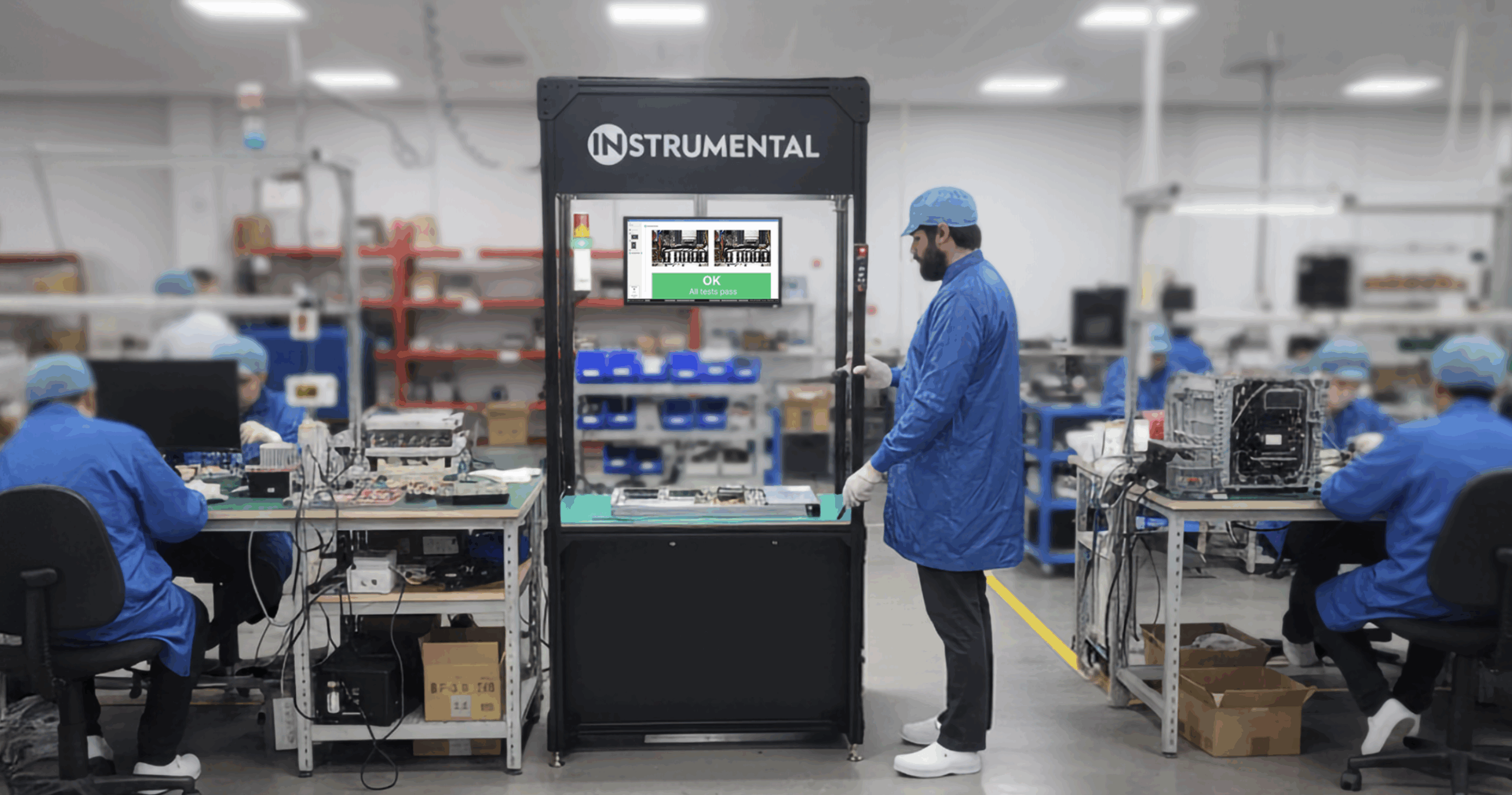Brendan Green is Head of Advanced Manufacturing Operations at Instrumental. We asked him to share tips he’s learned from his experiences manufacturing physical products. This is Part 1 of 2.
Q: Tell us about your experiences with manufacturing.
I was formerly a Project Coordinator and Communications Manager at a life sciences company before founding a toy company called DigiPuppets. At Instrumental, I work with engineers at product companies and manufacturers to deploy Instrumental equipment and provide ongoing support. Across these roles, I have worked with smaller factories, subcontracting manufacturers, manufacturing agents, and very large contract manufacturers with multiple factories. I’ve had lots of first hand experience with the pains involved in getting products made – mostly in China. I speak Chinese fluently.

Q: What is the first manufacturing experience most people have that makes them realize they have misaligned expectations?
A lot of people expect that the factory will help you solve problems, but sometimes they won’t – or they won’t do it in the way you expect. Across all factory sizes, as a product company you need to understand where responsibilities lie and how much problem solving is yours to handle. Unless you’re a very large company or you have a special arrangement with the manufacturer, you should plan on having the right tools, people, and expertise through multiple issue-finding builds (e.g. EVT, DVT, PVT) to smooth things out on your own.
The biggest reason for this is that most factories have very small operating margins. As a result, manufacturers often don’t want to be involved in the prototyping or problem fixing realms at all. They want you to come with the materials list, procedure, etc. nailed down as much as possible so you can hand it over and have them just get started. That’s because every little thing that needs fixing can be money lost for them.
Here’s an example: When I was working on my toy company, DigiPuppets, we were using a substrate that was mixed with an additive. The additive was not uncommon, but was always used on the inside of products and was never on the outside where it was subject to a finishing process, such as painting. However, we were applying finishing paint, something no one had ever really learned how to do before. We got through prototyping pretty fast, but when we started building, we had a problem crop up near the end where the material started cracking after the painting process. No one had ever used this material in the way that we were using it, so we had to figure out the root cause ourselves. We tried lots of different painting processes – varying heats, thicknesses, curing times, etc. Eventually one of our factories said “this is too much, we don’t want you as a customer any more.” In this case it worked out because they weren’t a great partner and we found a better one, but it was a stressful process.
Q: Why is it so important to have someone spot-checking on the line?
Many reasons. For one, because margins are low, one way that some factories try to make money is that they will substitute cheaper parts or materials for the ones you specify if you’re not checking. This is really important especially if you’re subject to regulations.
Second, when you first start making something, there’s only so much you can communicate without actually being there in person. You can draw, you can ship fully assembled “golden” parts, but there’s just nothing that compares to actually being there in person and making sure they get those first units right so they know how to do things. That’s most true at the beginning; if you’re going to be there at any point, the beginning is the most important time. (You should be there all the time, but the beginning is the most critical in that respect.)
Third, there are just some issues that are not possible to catch if you can’t see them. You have to be there when things go wrong, standing on the line, watching them happen. Another way this shows up is that units might fail a test but there could be so many different reasons they failed that you have to fly someone out to the factory to go walk up and down the line trying to figure it out. This is where something like Instrumental comes in handy because it gives you a record of everything that happened on your assembly line.
And last, when things do go wrong, factories are reluctant to admit it. They have quotas that they need to make, and their salaries and livelihoods are based on this, so it’s understandable. As a result they will often try to fix things without telling you. This could happen by substituting a part, taking out a part, or coming up with their own solution. Often this is done with the best of intentions for your product, but if you’re not there to see this, you could get something that doesn’t work, doesn’t work as intended, or worse – fails tests.
Continue to Part 2
Instrumental helps product companies find and fix issues on their assembly lines using productivity-boosting inspection, comparison, and measurement tools. Contact us for a demo.
Related Topics



